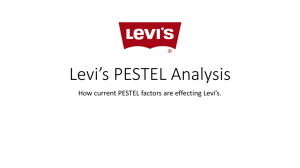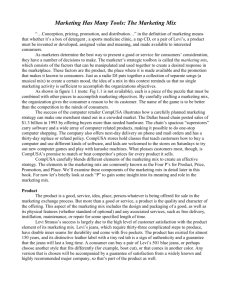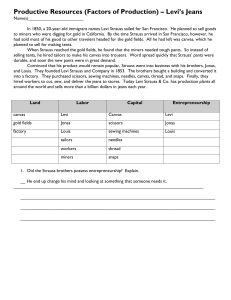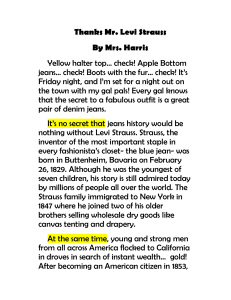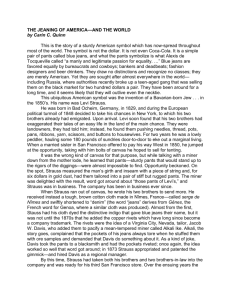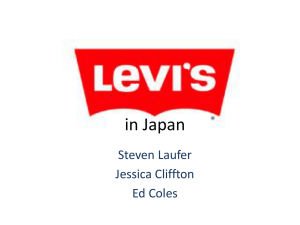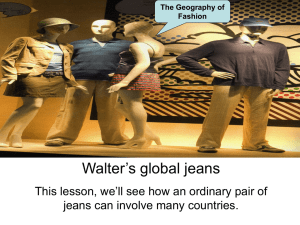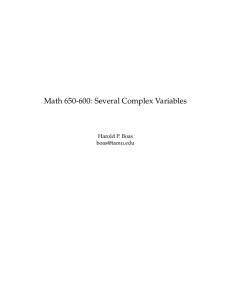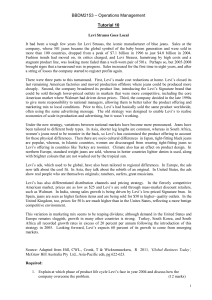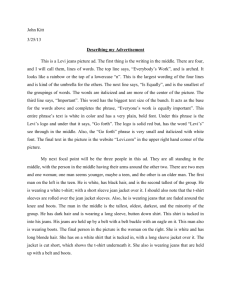Life Cycle of the Jean - Northgate Engineering
advertisement
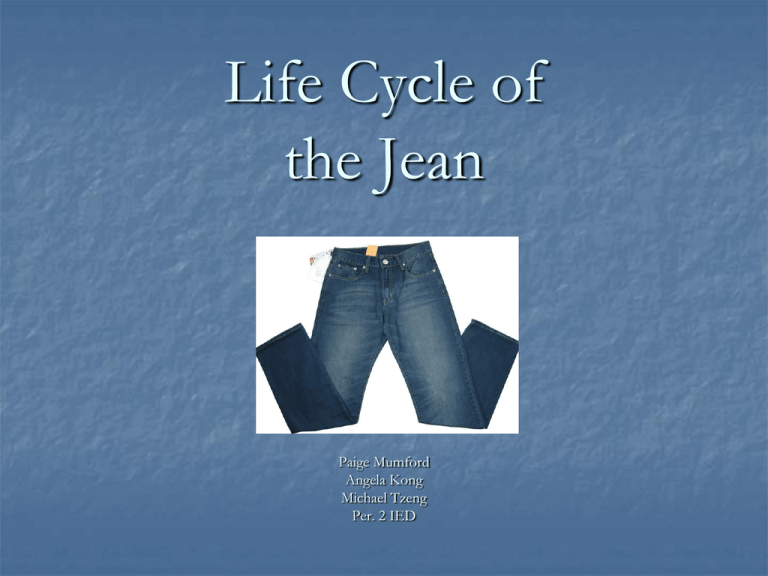
Life Cycle of the Jean Paige Mumford Angela Kong Michael Tzeng Per. 2 IED Overview Raise & Extract Cotton Farming in the fields Half of water used in product’s full life cycle < 5% of raw materials used are sources other than cotton Indigo dye farmed in fields Process Fabric Production Textile mills turn cotton fiber into fabric Dye is extracted from the indigo plant In Mexico - largest mill supplier has waste water treatment plant Can recycle approx. 75% of its water production, rest rooms, landscape irrigation Manufacture Contracted suppliers Cut, sew, finish Buttons are added onto to cloth Transportation & Distribution Low carbon-using transport. rail and container ships to retail, online, wholesale locations Use Clothing article Largest environmental impacts Reduce lifecycle climate change impact by 50% line drying & cold water washing 58% of energy & 45% of water from lifetime in this phase Dispose Recycled fiber new fashions/products housing insulation Levi’s - recycled denim insulation in San Francisco 24 billion lbs clothing per year landfills Citations Camp, Scott, Gordon Clark, Laura Duane, and Aaron Haight. "Life Cycle Analysis and Sustainability Report." Http://www.uvm.edu. Http://www.uvm.edu. Web. 25 Apr. 2012. <http://www.uvm.edu/~shali/Levi.pdf>. "An Environmental Product Declaration of Jeans." Http://www.ademe.fr/internet/eco-jean/EPD_en_jeans_v2.pdf. Agence De L'Environnement Et De La Maîtrise De L'Energie. Web. 25 Apr. 2012. <http://www.ademe.fr/internet/eco-jean/EPD_en_jeans_v2.pdf>. "Goodwill Green." Goodwill of Silicon Valley. Web. 25 Apr. 2012. <http://www.goodwillsv.org/goodwill-green>. "Life Cycle of a Jean | Levi Strauss & Co." Levi Strauss. Web. 25 Apr. 2012. <http://www.levistrauss.com/sustainability/product/life-cycle-jean>.
